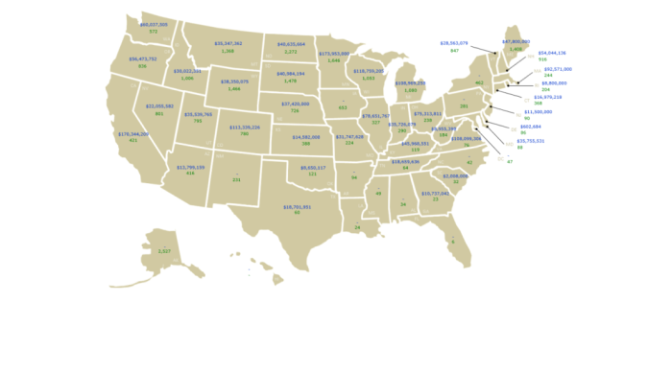Clear Roads has published the results of their ninth Annual Survey of State Winter Maintenance Data, which compiles winter resources, material and cost data from 41 states for the 2022-2023 winter season. The spreadsheet includes all submitted data, as well as calculated statistics, winter severity index data, and a United States map that displays many of these metrics. The spreadsheet also includes data from the previous seven surveys (winters 2014-2015 through 2021-2022) and displays averages and changes across winter periods.
Tag Archives: Clear Roads
New Podcast Episode of Talkin’ Winter Ops
Now in its seventh season, AASHTO’s Talkin’ Winter Ops podcast hits the ground running with an all new episode.
Continue reading New Podcast Episode of Talkin’ Winter OpsWinter Maintenance at the 2024 TRB Meeting
Reposted from Clear Roads News, January 31, 2024.
Clear Roads has prepared a listing of technical sessions and posters related to winter maintenance that were presented at the 2024 Transportation Research Board Annual Meeting. The list includes nearly two dozen papers and posters, with links to presentation materials. The sessions covered a wide range of winter maintenance topics, including materials, equipment, technology and weather.
Download the list: Winter Maintenance at the 2024 TRB Annual Meeting
Compendiums from prior years are available on Clear Roads’ TRB Papers on Winter Maintenance page.
Clear Roads: Winter Maintenance Research Roundup
Check out the recent research from transportation organizations around the country:
- Cooperative Automation Driving System (C-ADS) with Road Weather Management (RWM) with a Lane Closure, Federal Highway Administration, December 2023. Fact sheet.
- Field Test & Evaluation of a Solar Snow Fence, National Cooperative Highway Research Program, May 2023. Research report. (Editor’s Note: Solar snow fence is now being tested by MnDOT. Subscribe to the project for continued updates.)
- Snow Depth Retrieval with an Autonomous UAV-Mounted Software-Defined Radar, Colorado DOT, April 2023. Research report.
Clear Roads: Winter Maintenance Research in Progress
New research is underway! Learn more about some of the winter maintenance issues that Clear Roads and other transportation organizations around the country are exploring now:
- Automating Variable Speed Limits Using Weather, Traffic, and Friction Data, Aurora Pooled Fund. Anticipated completion date: January 2025. Project description.
- Developing a Collision Warning and Collision Avoidance System for WYDOT Snowplows, Wyoming DOT. Anticipated completion date: April 2024. Project proposal.
- Development of a Public Service Announcement Library, Clear Roads Pooled Fund. Anticipated completion date: March 2025. Project description.
- pH Waiver for Deicing Products and the Qualified Products List, Clear Roads Pooled Fund. Anticipated completion date: April 2025. Project description.
Clear Roads is a multi-state winter maintenance research initiative. The original article was published by Clear Roads on their website, January 4, 2024.
Efficacy, Cost, and Impacts of Non-Chloride Deicers

In their most recent newsletter, Clear Roads presented the results of a pooled-fund study on alternative deicing products.
Clear Roads: Winter Maintenance Research Roundup
Article originally published by Clear Roads, December 7, 2023.
Check out the recent research from transportation agencies around the country:
- Improving Roadway Friction Measurements, Iowa DOT, September 2023. Research brief.
- Snowplow Route Optimization for the Kansas Roadway System, Kansas DOT, September 2023. Technical Summary.
- Crowdsourcing/Winter Operations Dashboard Upgrade, Indiana DOT, August 2023. Research report.
- Evaluation of a Portable Snow Melter for Use in Caltrans Maintenance Yards, Caltrans, July 2023. Research report.
- Salt Monitoring and Reporting Technology (SMART) for Salt Stockpile Inventory Reporting, Indiana DOT, July 2023. Research report.
New Talkin’ Winter Ops Podcasts
The Talkin Winter Ops podcast is an opportunity to listen in on thought-provoking conversations with experts and practitioners who have walked the walk. Devoted to all things winter maintenance and road-weather related, guests and topics range from practical to academic, tactical to strategic, and the folks who get the job done. Here are some recent podcasts you might be interested in.
Continue reading New Talkin’ Winter Ops PodcastsClear Roads Now Solicits Research Ideas Year-Round
Do you have a winter maintenance problem that you think research can solve? Anyone in the winter maintenance community can submit their idea and have it considered by the Clear Roads Technical Advisory Committee (TAC). Submit your research idea before December 31st and it could become a Clear Roads research project during the following year’s research cycle.
Clear Roads funds research that addresses six winter maintenance initiatives: planning, equipment, materials, training, technology, and safety. The ideas and problem statements that best meet Clear Roads’ priorities will be developed into full-scale research solicitations (RFPs) and posted by MnDOT for competitive bid.
To learn more about Clear Roads research opportunities, please sign up to receive Clear Roads email updates. For a list of research ideas considered in past years, see the All Proposed Projects page.
New Clear Roads RFPs: Proposals due Sept. 8
Clear Roads is currently soliciting investigator proposals for four new research projects:
- Using Vegetation Management Practices Near Roads to Leverage the Benefits of Solar Radiation
- Updating the Impact of Capital Projects Decision Support Tool
- Quantifying the Economic Value of Snow and Ice Operational Success
- Development of a Public Service Announcement Library
To view the details of these RFPs, scroll through MnDOT’s Professional Technical Consultant Services. For all projects, the deadline to submit proposals is Friday, September 8, 2023.









